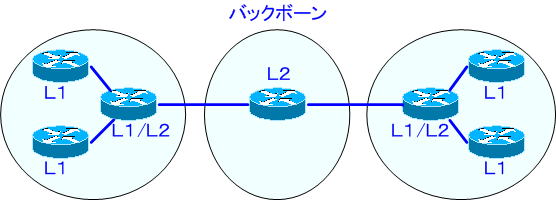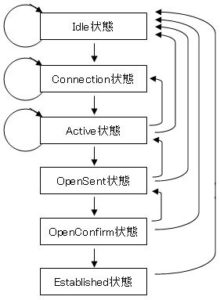What is IS-IS
What is IS-IS
IS-IS (Intermediate System to Intermediate System) is a link-state routing protocol. Another link state routing protocol is OSPF.
IS-IS was originally developed for routing over CLNS (Connectionless Network Service).
*CLNS is a network layer service that transmits messages without establishing a line before starting data transfer.
IS-IS was developed by ISO around the same time as OSPF and was later modified to be routable over TCP/IP. IS-IS extended so that it can be routed by CLNS and IP is called “Integrated IS-IS”.
Current networks, including the Internet and LANs, are underpinned by TCP/IP. In general, OSPF is often used as a link state routing protocol, but the only routing protocols that can be used with MPLS are OSPF and IS-IS, so IS-IS is still I have not retired from active duty.
IOS must support CLNS for the IS-IS exercises on Cisco routers. IS-IS exchanges CLNS PDUs, including Hello PDUs for adjacency with neighboring routers.
To understand IS-IS smoothly, I recommend learning multi-area OSPF first. Since they are the same link-state routing protocol, they are similar in behavior and mechanics.
Characteristics of IS-IS
The characteristics of IS-IS are very similar to OSPF. Below are the characteristics of IS-IS.
- Support VLSM, route summarization.
- algorithm to calculate the route.
- Has a link state database.
- Hello packets are exchanged to form an adjacency relationship.
- Exchange CLNS PDUs.
IS-IS uses CLNS PDUs instead of IP packets to exchange information.
- It has the concept of area.
In OSPF, area boundaries are on routers, whereas in IS-IS, area boundaries are on links.
- Areas are connected to a backbone area.
There is no rule that the backbone area must be 0 like OSPF.
- The IS-IS process is limited to 1 only.
- An IS-IS router belongs to only one area.
It cannot belong to multiple areas like an OSPF router.
- DR is switched.
In OSPF, DR reelection does not occur until the DR goes down, but in IS-IS, DR reelection occurs when the higher priority IS-IS comes online.
- There is no BDR election.
- Support authentication.
It supports authentication similar to OSPF.
IS-IS (area concept)
IS-IS, like OSPF, has the concept of areas. It is also similar to OSPF in that each area is connected to a backbone area.
Let’s compare the OSPF area configuration and the IS-IS area configuration in the figure.
In OSPF networks, ABRs exist at area boundaries. ABR specifies the area to which each interface belongs.
Therefore, the boundary of the area will be located on the router of the ABR.
<OSPF area configuration diagram>

As you can see from the figure below, in IS-IS, the area boundary is located on the link. Routers do not span multiple areas. A router exists entirely within an area.
<IS-IS area configuration diagram>

In OSPF, there was a rule that the backbone area should be area 0, but in IS-IS, the ID of the backbone area can be anything.
L1 router
An L1 router is a router belonging to a non-backbone area. L1 routers only learn routes within their area and perform intra-area routing. Out-of-area routes are limited to the default route to the L1/L2 router. L1 router establishes adjacency with L1 router and L1/L2 router in the area.
L1 routers build a Level 1 link state database by exchanging Level 1 link state PDUs among themselves. L1 routers within an area have the same Level 1 router.
L2 router
A L2 router is a router in the backbone area. Traffic between areas passes through the L2 router. L2 routers establish an adjacency relationship between L2 routers within an area and with adjacent L1/L2 routers.
L2 routers exchange Level 2 link-state PDUs to build a Level 2 link-state database.
L1/L2 router
It may be easier to imagine an L1/L2 router as an OSPF ABR. Connects within and between areas. L1/L2 routers exchange Level 1 link-state PDUs to build a Level 1 link-state database and exchange Level 2 link-state PDUs to build a Level 2 link-state database. ,
How routing works
IS-IS routing separates the routing process into three levels.
●Level 1 routing: routing within an area
●Level 2 routing: Routing between areas. Communication between different areas goes through the backbone.
● Level 3 routing: Routing between different domains.
In IS-IS, it is easy to understand by thinking that the L1 router performs routing to area 1 and the L2 router performs routing between each area.
IS-IS adjacencies
Like OSPF, IS-IS (Intermediate System to Intermediate System) is also a link-state routing protocol.
It works similar to OSPF. An adjacency relationship is formed with neighboring routers, and DR election is also performed.
By default, IS-IS sends Hello PDUs every 10 seconds to form an adjacency.
In OSPF, if the Hello interval and the Dead interval are not the same, the adjacency cannot be established.
IS-IS does not require equal spacing
Since IS-IS uses the hold time described in the Hello PDU for each adjacent router, it is possible to set different Hello and Dead intervals for each IS-IS router.
EIGRP also allows you to set hello and dead intervals to different values.
In IS-IS, adjacencies are established at Level 1 and Level 2.
● Level 1 adjacency
Level 1 type Hello PDUs are exchanged between L1 routers and between L1 routers and L1/L2 routers.
● Level 2 adjacencies
Level 2 type Hello PDUs are exchanged between L2 routers and between L2 routers and L1/L2 routers.
L1/L2 routers will have Level 1 adjacencies and Level 2 adjacencies.
Election of DRs for IS-IS
In IS-IS, as in OSPF, DR election is performed in broadcast multi-access networks. Election of the DR can reduce link-state PDUs.
In OSPF, DR reelection does not occur until the DR goes down, but in IS-IS, DR reelection occurs when the higher priority IS-IS comes online. Also, no BDR election takes place.
In IS-IS, adjacencies are established on a level-by-level basis, but DR election is also done on a level-by-level basis. If there are Level 1 and Level 2 areas in the same broadcast network, DRs are elected at each level.
DR election process
IS-IS also has a DR election process.
The OSPF election process works as follows.
<OSPF DR election process>
1. The router with the highest priority is elected DR.
PRIORITY=0 to 255, the higher the number, the higher the priority. If the value is 0, it will not be elected as DR.
2. If the priorities are the same, the router with the largest ROUTERID is elected as the DR.
If an IP address is set for the loopback interface, the IP address assigned to the loopback interface will be the ROUTERID. Loopback interfaces take precedence over physical interfaces.
IS-IS also allows administrators to participate in the DR election process by changing priorities.
The default value for priority in IS-IS is 64. You can manually set a value between 0 and 127. By the way, if you set 0, you can prevent it from being elected as DR. This area is similar to OSPF.
Priority is set for each level.


